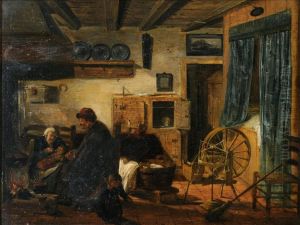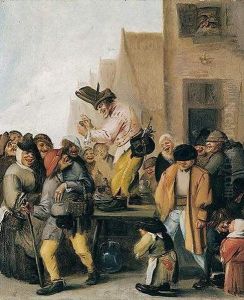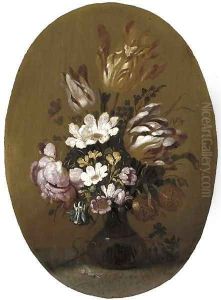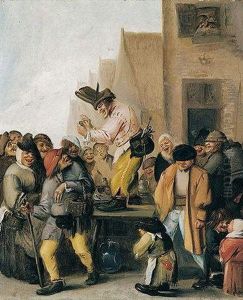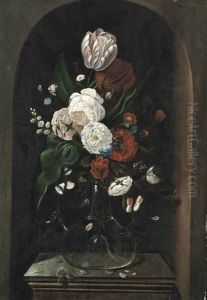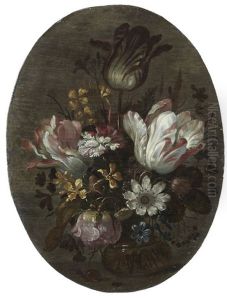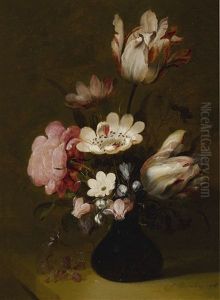Hans Bollongier Paintings
Hans Bollongier, also known as Jan van Bollongier, was a Dutch Golden Age painter who specialized in still lifes, particularly flower pieces. Born around the year 1600 in Haarlem, Netherlands, Bollongier became associated with the Haarlem Guild of St. Luke, a city renowned for its vibrant artistic community during the 17th century. His work is characterized by its precise detail, vibrant colors, and the ability to capture the transient beauty of flowers, making him one of the notable figures in the genre of floral still lifes.
Bollongier's paintings often featured arrangements of flowers in vases, showcasing a variety of species, some of which were rare and highly valued during the 17th century. These compositions were not only appreciated for their aesthetic value but also served as a symbol of wealth and knowledge about the natural world among the Dutch elite. His ability to depict the texture and delicacy of petals, as well as the interplay of light and shadow, demonstrated his keen observation skills and mastery over his medium.
Despite his talent and contribution to the development of the floral still-life genre, Hans Bollongier is not as widely recognized as some of his contemporaries, such as Jan Davidsz. de Heem or Willem Claeszoon Heda. However, his works are preserved in several esteemed collections and museums, reflecting the enduring appeal and significance of his artistry.
Throughout his career, Bollongier remained active in Haarlem, where he contributed to the local art scene and continued to produce works that were sought after by collectors of his time. He lived there until his death in 1675, leaving behind a legacy that captures the beauty and complexity of floral arrangements, contributing to the rich tapestry of Dutch Golden Age painting.

